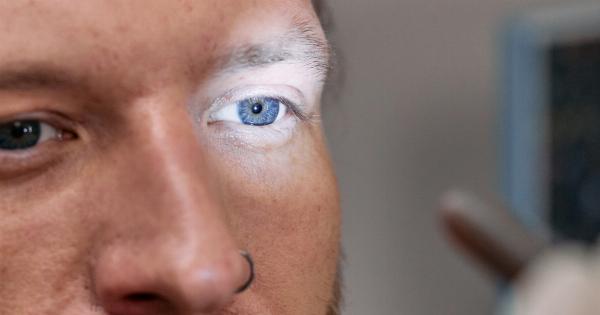Eye color is one of the most intriguing aspects of human genetics. While it is primarily determined by the amount and type of pigment in the iris, there are several factors that can influence and alter eye color.
In addition to genetics, which play a major role, other lesser-known factors can also contribute to changes in eye color. Let’s explore these little-known factors that can alter your eye color.
1. Age
Did you know that your eye color can lighten or darken as you age? This phenomenon is more commonly observed in individuals with light-colored eyes. During infancy, melanin deposition in the iris is not yet complete, which results in lighter eye colors.
As a person grows older, more melanin is usually deposited, causing the eyes to darken. However, eye color changes can occur at different rates and to varying extents in individuals.
2. Lighting and Surroundings
The environment in which we find ourselves can also affect the appearance of our eye color. Lighting plays a significant role in how our eyes are perceived by others.
Bright lighting can make eye pigments appear more vibrant, enhancing the intensity of the eye color. On the other hand, dim lighting can make eye colors appear duller or even change their perceived hue.
Additionally, the color of the surroundings can create optical illusions that make our eyes appear to have different colors under certain lighting conditions.
3. Emotional and Psychological Factors
Did you know that emotions and psychological states can influence your eye color? It may sound surprising, but intense emotions like anger, fear, or excitement can cause your pupils to dilate.
As the size of your pupils changes, more or less light enters your eyes, potentially altering the appearance of your eye color. While this change is temporary and not a true alteration of the iris pigmentation, it can give the impression of a different eye color.
4. Medications
Certain medications, particularly those used to treat glaucoma, can affect eye color. One such medication is called latanoprost, and it is known to cause significant changes in eye color over time.
Latanoprost works by increasing the outflow of fluid from the eyes, which can lead to the darkening of eye color, especially in individuals with lighter eye shades. If you are taking any medications that affect your eyes, it is essential to be aware of the potential side effects on your eye color.
5. Hormonal Changes
Hormonal changes, such as those that occur during pregnancy or puberty, can also impact your eye color. Fluctuations in hormone levels can influence the distribution and concentration of melanin in the iris.
As a result, the eye color may appear lighter or darker than usual during these transitional periods. It is fascinating to see how our bodies can undergo subtle changes, even in the color of our eyes, due to hormonal shifts.
6. Eye Injuries and Diseases
In some cases, eye injuries or certain diseases can cause changes in eye color. For example, if the iris sustains trauma, it can result in the release of inflammatory and immune response molecules.
These molecules can cause pigment dispersion or changes in the iris structure, leading to alterations in eye color. Additionally, conditions such as heterochromia and Horner’s syndrome can cause variations in eye color, either due to differences in pigmentation or disruptions in the nerve pathways that control iris appearance.
7. Contact Lenses
Contact lenses are a popular way to change eye color temporarily. Whether you desire a subtle enhancement or a dramatic transformation, colored contact lenses can help you achieve the desired look.
These lenses come in a variety of shades and patterns that can alter the appearance of your eyes. However, it is crucial to remember that contact lenses should be prescribed and used under the guidance of an eye care professional to ensure proper fit, comfort, and eye health.
Conclusion
While genetics primarily dictate our eye color, there are several lesser-known factors that can influence or alter it over time.
Age, lighting conditions, emotions, medications, hormonal changes, eye injuries or diseases, and even contact lenses can all play a role in modifying eye color. Understanding these factors helps us appreciate the ever-changing nature of our eyes and the complexity of human genetics.





















